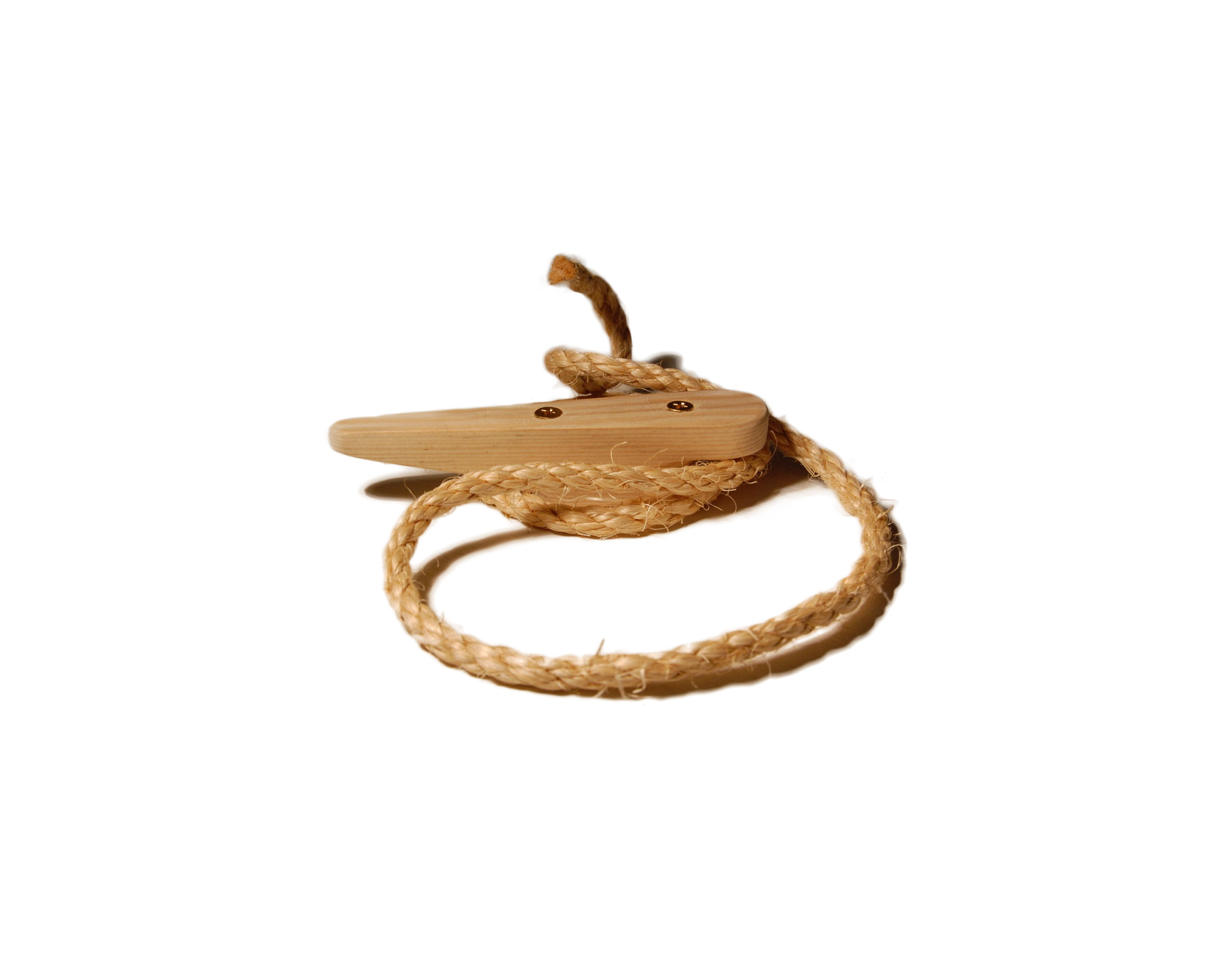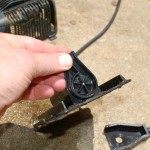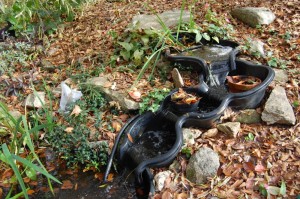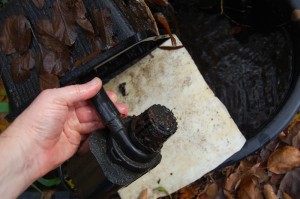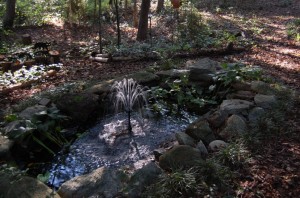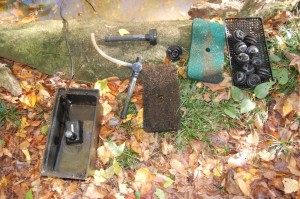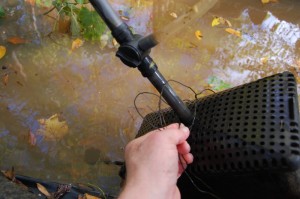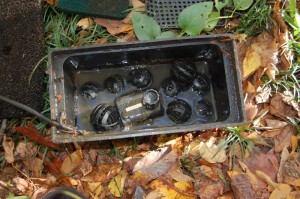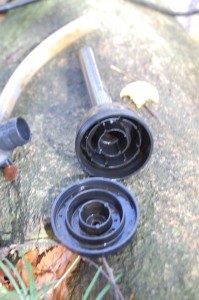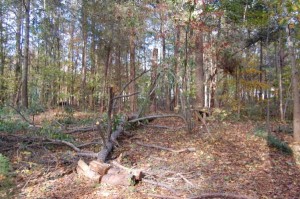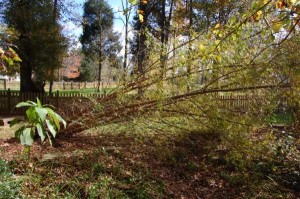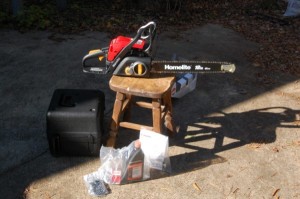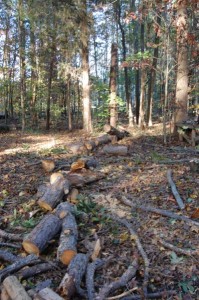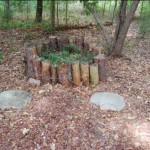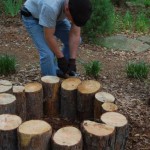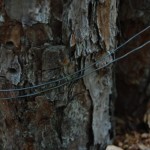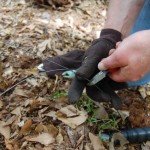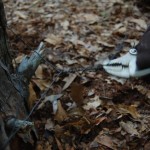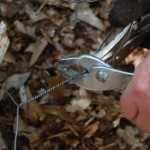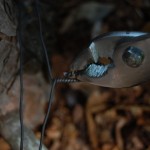
At the front of the house is a solar power fountain. My wife had bought a kit from a local store about 5 years ago. With the constant exposure to the weather and occasional freezing, the solar cell went bad.
So I needed a replacement solar cell. How can you tell if your solar cell is bad? If you have a multimeter [I prefer the kind with a needle because then I know it is not the battery], you can read out the voltage produced in bright sunlight. The front of the old panel was wet on the inside and you coud see right through in places. Time for a new one.
A little web-surfing brought up Silcon Solar . Their on-line catalog had a picture of a pump similar to mine. And a kit that included that pump with a solar cell that looked quite different. An e-mail exchange over a couple of days answered my questions and the new solar cell is in place and powering the fountain. This 18v (white and blue at left) solar cell will power the 12v pump unit just fine.
But the little 12v pump needs care too. The sun helps the algae to grow and the rain stirs up the sand at the bottom of the pond and that can stall the pump, even with the filter. Here is how to clean the pump in the pond at the front of the house.
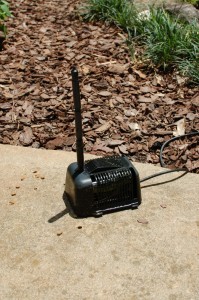
The pump unit consists of a top cover, a base plate with the motor and pump attached, the fountain tube, a wire that is connected to the power source or solar cell and what cannot be seen is piece of filter media.
Before attempting to remove the top cover, remove the fountain tube from the pump outlet. Be care not to bend the tube at any time. Carefully twist and pull the tube from the pump outlet tube just outside the cover. Once the tube is remove, the cover can be separated from the baseplate.
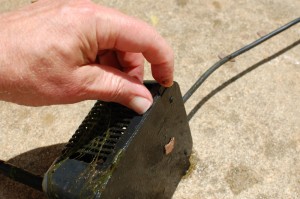
At the bottom of the cover where it meets the baseplate are 4 tabs. Lifting the tabs lightly at the same time, allows the cover and base plate to separate.Removing the filter media reveals the pump components. The pump, on the baseplate consists of a cover/front half, motor-impeller assembly mounted on the baseplate.
Remove the filter medium. Rinse thoroughly. Wringing will shorten the life of the medium.
Carefully use the blade of a straight-slot screwdriver under the pump housing to remove the cover. Rock the blade back and forth until the cover is loose. Then lift straight off. Carefully remove any debris or algae. Rinse with pond water if required.
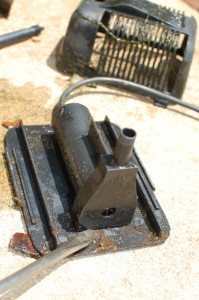
Test that the pump impeller turns freely by making sure that the solar cell is in full sun. The motor should run vigorously. If not check for binding due to dirt or algae. Replace the cover and insure that the pump continues to run at full speed without binding or stalling.
